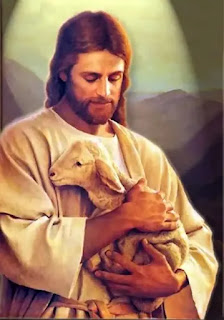Critical appreciation of the poem “The Lamb” by William Blake
The Lamb is William Blake’s simple poem, written in a lucid style, conveying his philosophy about the world of children, its bliss, and perfection. It is one of the poems belonging to his “Songs of Innocence” published in 1789. In the “Songs of Innocence,” the prevailing symbol is the lamb, which is an innocent creature of God and which also symbolizes the child Christ. The world of it is largely a world of simplicity, purity, happiness, and security. Blake gives us his vision of the world as it appears to the child. Both ‘child’ and ‘lamb’ serve as symbols for Christ. The lamb, pure and pretty, simple and innocent, seems the work of a kindly, comprehensible Creator. To the mind, in the state of innocence, the lamb appears to be a fit symbol of life. In this poem, the lamb and the child are identified with Christ who represents purity and innocence as they do, and Blake glorifies the lamb.
The poem opens with the description of the little creature and this description is given by the child who is the speaker here. The first stanza contains a number of natural pictures to build up the lamb’s “habitat” but stresses the character and qualities of this meek and mild creature of God. To the child as to the poet himself, the lamb is a wonderful creature of beauty and innocence. The child wants to know who has created it.
Little Lamb, who made thee? /Dost thou know who made thee?
The child puts this question because of the wonderful qualities which this creature possesses. The lamb is blessed with life and the capacity to feed by the small river and over the grassy land. It is endowed with shining and soft wool which serves as its clothing. It has a tender voice which fills the valley with joy and bliss. Thus we have here a true portrait of a lamb.
Gave thee life and bid thee food,
By the stream and o’er the mead;
Gave thee clothing of delight,
Softest clothing, woolly, bright; Gave thee such a tender voice
Making all the vales rejoice?
In the second stanza there is an identification of the lamb, Christ and the child. Christ has another name; He is called lamb, because Christ is meek and mild like a lamb. Christ is also called a child since He shared gentleness, meekness, innocence and simplicity with a child. Christ was also a child when he first appeared on this earth as the son of God. He, later on, praised the innocence of children. In the poem “Introduction” the child on the cloud may be regarded as symbolizing Christ. Both the child and the lamb have the same name as Christ has. They all share the same qualities – meekness, mildness and innocence:
He became a little child,
I a child, and thou a lamb,
We are called by His name.
The child in this poem is portrayed as speaking to the lamb, as if the lamb were another child and could respond to what is being said. child shows his deep joy in the company of the lamb who is just like him, meek and mild, simple and innocent. The poem conveys the very spirit of childhood – the purity, the innocence, the tenderness of childhood and the affection that a child feels for little creatures. A religious note is introduced in the poem because of the image of Christ as a child.
The poem consists of twenty lines, divided into two stanzas. The structure of each stanza consists of a theme in the first two lines, exposition in the next six lines, and the conclusion in the remaining two lines. It is a two-line rhymed poem, and this two-line rhyme contributes to the musical or lyrical effect of the poem. Technically it is a triumph of form. The line “He is meek, and He is mild” is alliterative because the repetition of the letter ‘m’ at the beginning of the words ‘meek’ and ‘mild’ forms the alliteration.
